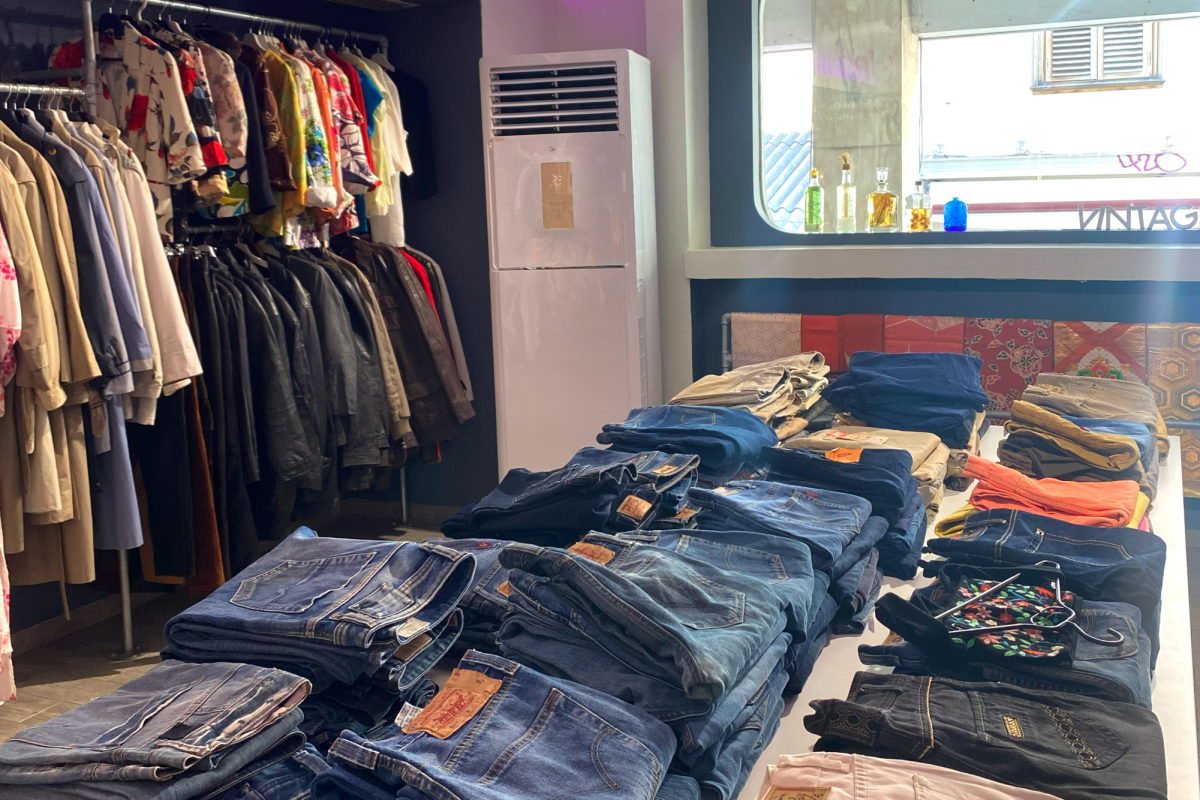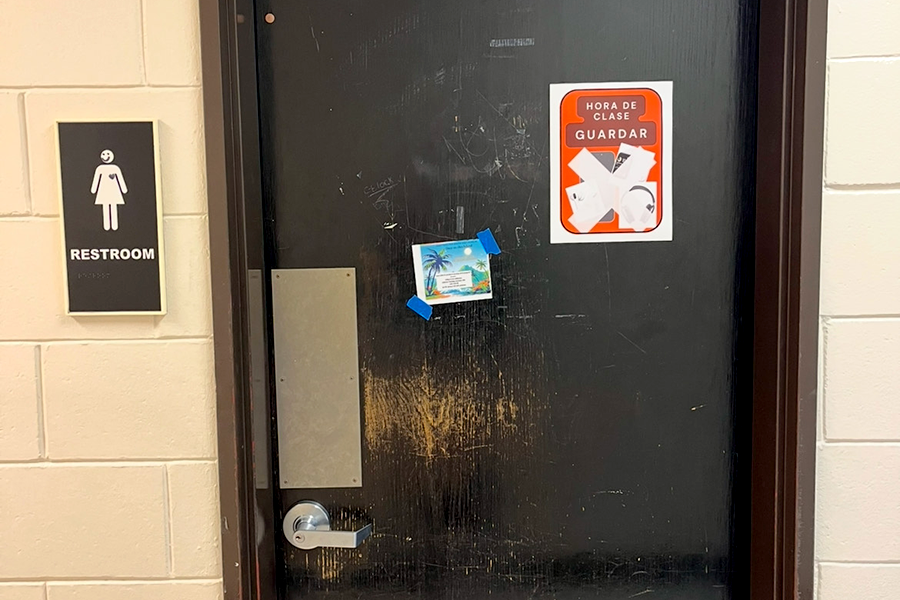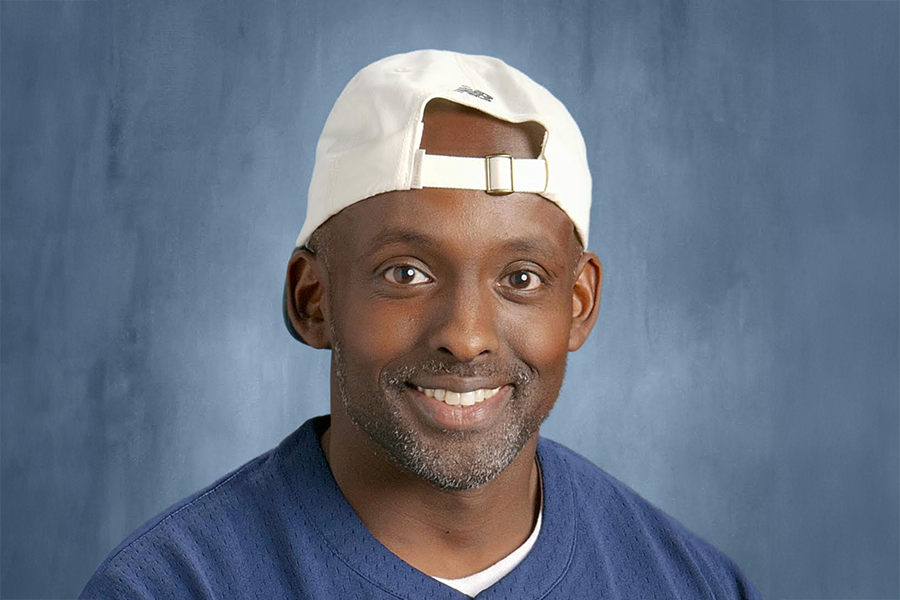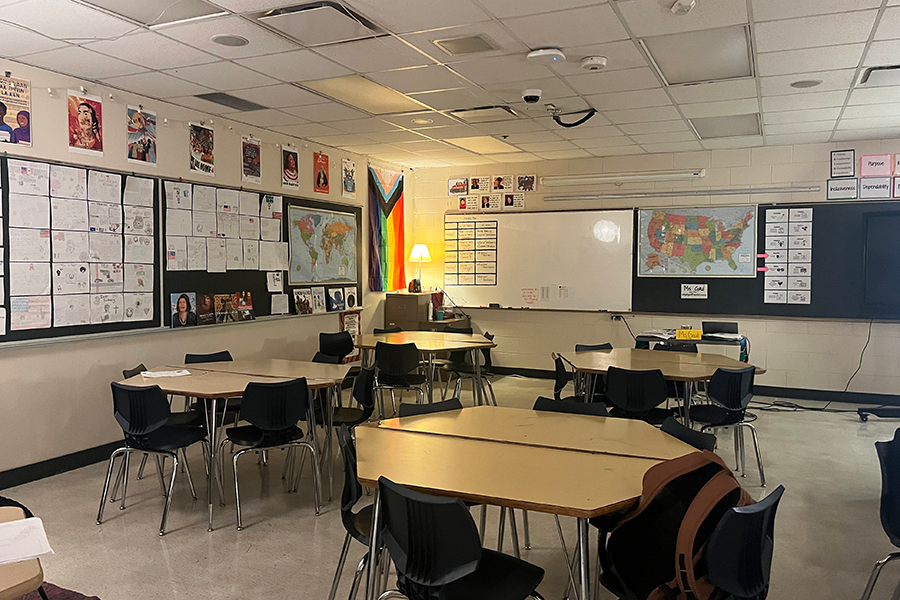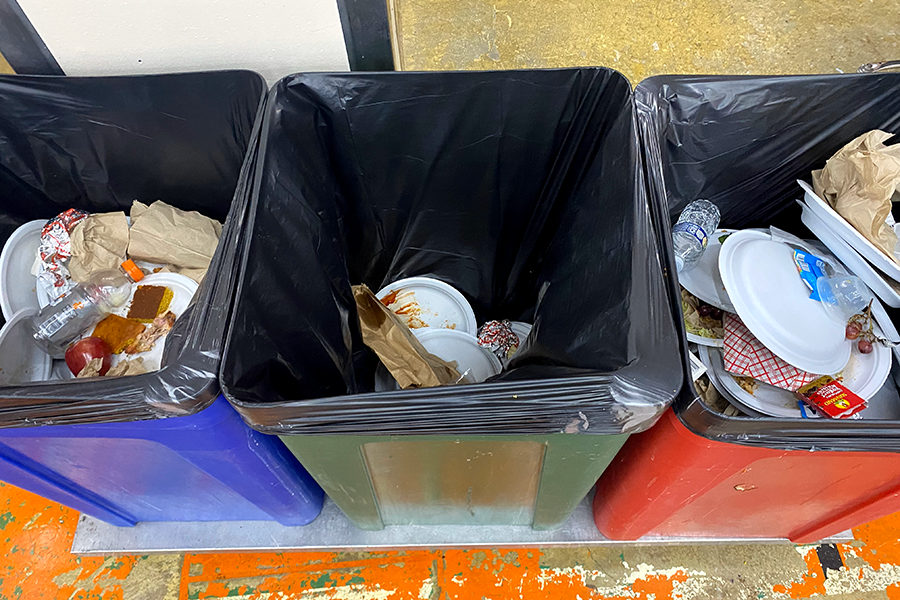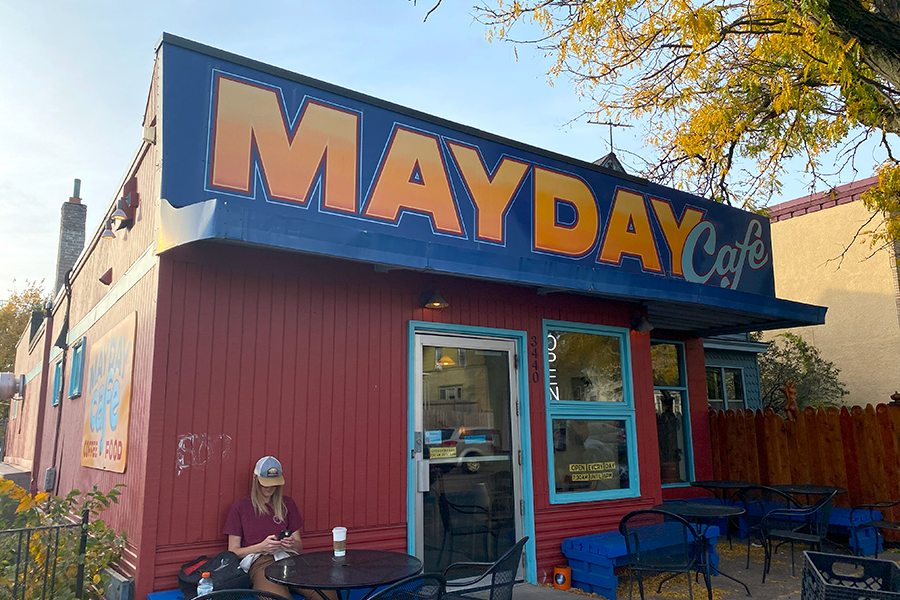On March 8th a non-profit organization called Invisible Children (IC) posted a thirty minute documentary online about a Ugandan war criminal named Joseph Kony. Within days, the video had gone viral and social media sites were overflowing with status updates saying “Kony 2012” and links to the video.
The San Francisco based organization was suddenly in the spotlight, and with that came a flow of criticism. South High students were watching videos, updating statuses, tweeting, blogging, posting memes and debating about the Kony 2012 campaign, Invisible Children and the issues in Uganda.
Kony 2012 has used the abundance of teenagers on social media sites to their advantage. The videos produced by Invisible Children are meant for a high school audience. “Our films weren’t made to be scrutinized by the Guardian,” defended Jedidiah Jenkins, IC’s director of ideology, In an interview with GOOD, an online magazine that describes itself as “for people who give a damn,””They were made to get young people involved in some of the world’s worst crimes.”
The video is targeted at teens, and it is racking up some emotional responses. “The video itself was very inspiring and it makes you want to do something, but I think that it can also restrict people from feeling like they have to learn more about the issue,” said senior Elena Anderson, President of South High’s Human Rights Group.
The problem in Uganda began In 1985 after President Milton Obote was removed from Ugandan office in a violent military coup carried out by a group called the National Resistance Army (NRA). Joseph Kony, a healer and spiritual leader, began gathering his own army to oppose the NRA. This was called the Lord’s Resistance Army, or LRA.
The LRA has brought fear and bloodshed to Uganda and surrounding regions, and the army is comprised of child soldiers who were kidnapped and forced to commit brutal acts.
It is estimated that in 20 years, Kony and his followers have abducted at least 30,000 children, who were forced to kill their parents and massacre their own villages, leaving the LRA as their only source of survival.
However, in recent years the LRA has become much smaller and moved the majority of their forces out of Uganda and into neighboring Democratic Republic of Congo. Kony himself has not been in Uganda since 2006 and it is said that the LRA has 150 to 300 combatants and a few hundred abductees.
This is one of the points that has frustrated people. Some wonder why there is so much attention on Kony and the LRA now, when the army’s rampage is mostly over. Where was everyone when thousands of children were being abducted and used as soldiers and sex slaves?
In 2004 Invisible Children Inc. was founded as a non-profit organization with the aim to educate people about what was going on with the LRA and issues in Uganda. It sprouted out of a trip to South Sudan to document the issues there, but when the group found these “invisible children” escaping Kony and heard their stories, they changed their focus.
Jenkins explained that IC had made 10 documentaries before the Kony 2012 documentary.
“We’ve built a groundswell of grassroots support through our other films,” said Jenkins who goes on to explain how frustrating it was that they would spend so much time and energy on their videos and only get a few thousand views, but “a video with a cat flushing a toilet gets 40 million views.” That made IC want to figure out what they needed to do to get that many views.
Jenkins went on to say that in response to this problem one of his colleagues said, “Man, this would be so much easier if we could make Joseph Kony famous and get people to actually know who he is. We wouldn’t have to fight so hard to get attention on these issue in Uganda.”
At the end of an emotional documentary, filled with personal accounts of the horrors of the LRA and a conversation with the creator Jason Russell’s young son, IC presents steps to be a part of their movement.
This is how the video lays it out: for Kony to be arrested this year, the Ugandan government needs to find him, but to do this they need American advisers deployed by the US government which they will only do if it believes the US citizens care enough. For people to care, they have to know about Kony and the situation, so Kony’s name and face must be seen everywhere.
The film says, “We are going to make Joseph Kony a household name, not to celebrate him but to bring his crimes to the light.” The next step is to target the famous, celebrities and policy makers, and get them talking and hearing about the issue.
On April 20 the event “Cover the Night” will occur. People are encouraged to get together that night, and cover their cities with posters so that when everyone wakes up in the morning they will be blasted with images of Kony.
The video outlines “simple steps” to get involved, “1. sign the pledge to show your support, 2. get the bracelet and action kit, 3. sign up for TRI (the program used by IC for donations) to donate a few dollars a month and join our army for peace. Above all share this movie online.”
The “action kit” includes t-shirts, bracelets, and posters. The bracelets are engraved with codes that can be programmed into IC’s website, and the website states that one reason to purchase the kit is the “people will think you’re an advocate of awesome.” This is why some people have said saying that Kony 2012 is being treated as a social fad, as opposed to a serious issue.
Offense has been taken to the idea that Kony, the war criminal himself, should become famous. Senior Furaha Kisongo moved from the Congo in 2002 because of her father’s work. The Congo is one of the areas where the LRA has invaded and wreaked havoc. “The media is making Kony famous instead of the issue,” said Kisongo, who believes that it is more important to focus on the children and citizens being affected.
“All we hear is Kony, Kony, Kony,” stated Kisongo, “people need to be aware of what is going on in other parts of Africa.” One of the issues that Kisongo is referring to is one in her home country.
“Our government is a dictatorship where people with more money have more power,” explained Kisongo. There has been war in the Congo since the 90’s, which is unrelated to the LRA. According to Kisongo, over 6 million people have died in that war but no one is talking about that.
“That’s one thing I have been thinking about,” said Anderson,”If I were to walk up to how many people in this school and ask them about what’s happening in Syria, how many of them would be able to give me a summary, in comparison to how many people can talk about Kony 2012.”
It can be argued that worldwide there are more serious problems than the LRA. “Even in Uganda there is talk of other things being more significant problems for Ugandan people than the LRA. They say that there is heavier al Qaeda presence than there is LRA presence in the country,” stated Anderson.
Anderson said that while the Human Rights group is not going to necessarily participate in the “Cover the Night” on April 20, they do want to do something surrounding the issue. Since there are so many differing opinions and controversy on the topic, the group wants to educate people about what is going on and let them formulate their own opinions from there.
One of these many opinions is that the organization is not credible, or “sketchy” as it has been said. “I don’t think that they are necessarily the best organization in terms of dealing with this issue or that this is the issue that should be getting all the attention because i think that awareness is always a good thing,” stated Anderson.
After watching the video and hearing some criticism, Anderson decided to do research for herself. “There is a lot of information out there about this campaign and about people’s responses to it and I’ve spent a lot of time looking into it and trying to find a stance for myself.”
“I just want people to be able to form their own opinions,” added Anderson.
While many people are just hearing about IC now, this is not the case for Senior Sara Greenhalgh. Four years ago Greenhalgh began fundraising for IC through a social action project with her synagogue.
Greenhalgh felt that she had not been very educated about the organization when she chose to work with it, but that their efforts are still for a good cause. Greenhalgh added that she believes, “that it’s good with the information it has and with bringing awareness and educating people on it, but in the essence of action it’s very poor.”
Since Greenhalgh had been invested in the organization for so long, the hype about Kony 2012 was more personal than most to her. “To put it bluntly, I was kinda pissed,” admitted Greenhalgh about the outpour of attention, “I think social networking and social media makes it far too easy for people to be satisfied when it comes to conflicts like this and when it comes to issues and bringing awareness about these things and actually doing something to help stop them.”
Anderson has a similar feeling about the use of social media for the campaign. “I think that people are really drawn to this campaign because it’s very modern and commercial, kind of like an MTV feel to it,” said Anderson. That “MTV feel” it what is drawing in so many young people, which is exactly what IC was attempting to do.
“I don’t think that’s necessarily a bad thing because you should communicate with the culture in a way that it responds so that it can relate to it,” explained Anderson, “but I think that it can also take away from some of the gravity of it.”
“The fact that you can put a status about it posting a video, like whatever that may be is great, but what are you going to do besides that?” questioned Greenhalgh who believes that people need to get involved more and become educated on both sides of the story. Greenhalgh encourages people to, “step outside of your laptop and do something.”
While Greenhalgh was glad that her peers were taking a notice of something she had cared about for so long, it was not without the added apprehension of the way the topic was being treated: as a social fad.
Greenhalgh compared it to “the Jack Jablonski thing, it’s kind of like ‘oh, this kid got hurt. Let’s show our support even if we may not know him, sending good thoughts your way’,” said Greenhalgh, “It has to do with the fact that some of the rules of hockey need to be changed for injuries to not happen as much, and then it just fizzled out a little bit.”
As with any social trend, there are the supporters, who sport the apparel and change their profile pictures, and the people who adamantly criticize it. Social media sites are perfect spot for these individuals to voice their opinions.
“I think there are a lot of kids who are being negative for the sake of being negative, you know, internet trolling,” voiced Anderson. “Trolling” is, as described in the New York Times, “manipulating other people’s emotional equilibrium” in various ways online.
“I’ve seen a lot of people who even post meme’s on Facebook like ‘how long have you known about Kony?’ like ‘you think you’re an activist’ and stuff, and I don’t think that’s okay,” said Anderson, “You shouldn’t denounce awareness and you shouldn’t denounce education.”
“The amount of time a person has been interested in an issue and been involved in it does not matter as long as they are truly passionate and interested in the issue,” added Anderson, “changing your profile picture doesn’t make a difference, but if someone truly learned about this from the video and wants to get involved, but they had no idea beforehand, then I don’t think that should be criticized.”
Greenhalgh has a bit of a different perspective having done work with IC, “I’m not trying to bash our generation; it’s just weird to have gone out into communities and done a lot of stuff and then be excited about a video being posted on Facebook.” However, Greenhalgh added, “I’m very happy that this got brought to people’s attention on a large scale.”
“What people don’t realize is that the youth in America, we’re very powerful. It may not seem like it, but we are,” offered Greenhalgh, “one of my favorite quotes is ‘it takes one and then another and then another to start a movement’”.
“I think kids in the US should try to learn about what is going on in the rest of the world,” proposed Kisongo, “we’re living in a world that is becoming more global and we should learn about what is going on in others lives.”

